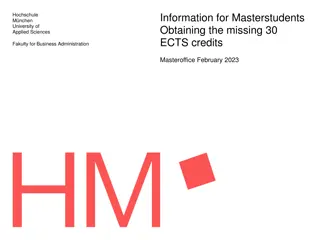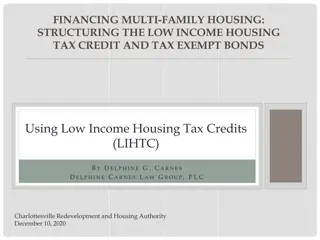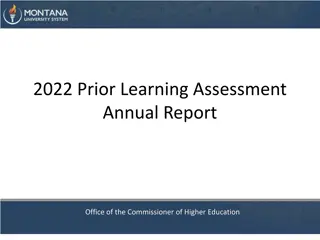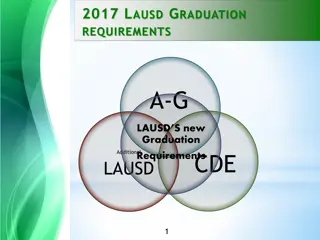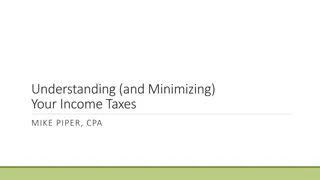
Understanding Nonrefundable Tax Credits for Retirement and Elderly Individuals
Explore the details of nonrefundable tax credits for retirement savings contributions and elderly or disabled individuals, including eligibility criteria, calculations, and reporting requirements on Form 1040. Learn about the types of contributions that qualify for the retirement savings contribution credit, reduction factors, testing periods, and limitations. Discover how the credit for elderly or disabled individuals is calculated based on age, disability status, income limits, and exclusions. Access resources like Form 8880, Schedule R, and Publication 4012 for further guidance on claiming these valuable tax credits.
Download Presentation

Please find below an Image/Link to download the presentation.
The content on the website is provided AS IS for your information and personal use only. It may not be sold, licensed, or shared on other websites without obtaining consent from the author. If you encounter any issues during the download, it is possible that the publisher has removed the file from their server.
You are allowed to download the files provided on this website for personal or commercial use, subject to the condition that they are used lawfully. All files are the property of their respective owners.
The content on the website is provided AS IS for your information and personal use only. It may not be sold, licensed, or shared on other websites without obtaining consent from the author.
E N D
Presentation Transcript
MISCELLANEOUS CREDITS SPRING 2018, LAMC
INTRODUCTION The miscellaneous credits are listed on the Tax and Credits section of Form 1040. All the credits in this lesson are nonrefundable credits. Credits in this lesson Retirement Savings Contribution Credit Credit for the Elderly or the Disabled
RETIREMENT SAVINGS CONTRIBUTION CREDIT Nonrefundable credit that can be claimed if taxpayer made a qualifying contribution to a retirement plan. Credit is calculated on Form 8880, Credit for Retirement Savings Contributions, and reported on Taxes and Credits section of Form 1040. Eligible contributions must be voluntary. Includes: Traditional or Roth IRA contributions (other than rollover contributions) Elective deferrals to a 401(k) or 403(b) plan, a governmental 457 plan, SEP, or SIMPLE plan Voluntary employee contributions to a qualified retirement plan defined in section 4974(c) Contribution to 501(c)(18)(D) plan Refer to Publication 4012, Tab G, Nonrefundable Credits: G-9 through G-11
RETIREMENT CONTRIBUTION CREDIT Eligible contributions can be reduced if there are distributions during the testing period. Testing period includes: Tax year Two years preceding tax years; and Period between end of the tax year and due date of the return, including extensions. For spouses who file as MFJ, both spouses may be eligible for credit on a maximum annual contribution of $2,000 each. Amount of credit Can be as low as 10% and as high as 50% Credit is using percentages. Go to Publication 4012, G-11 to determine percentages.
CREDIT FOR ELDERLY OR DISABLED This credit is calculated on Schedule R, and reported in Tax and Credits section of Form 1040. Eligibility Age 65 or older, or Under 65, retired on permanent and total disability, receiving taxable disability income, and under mandatory retirement age their company has set up. Taxpayer s total income must be within certain limits. Refer to Publication 4012, Tab G, Nonrefundable Credits: G-14, Table B Few taxpayers qualify for this credit because credit calculation includes nontaxable Social Security, veterans benefits or other excludable pension annuity or disability benefits.






